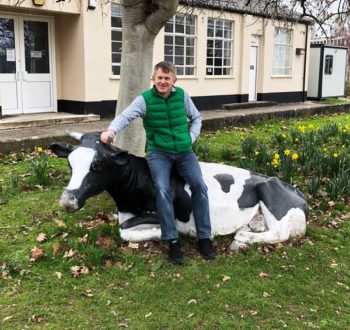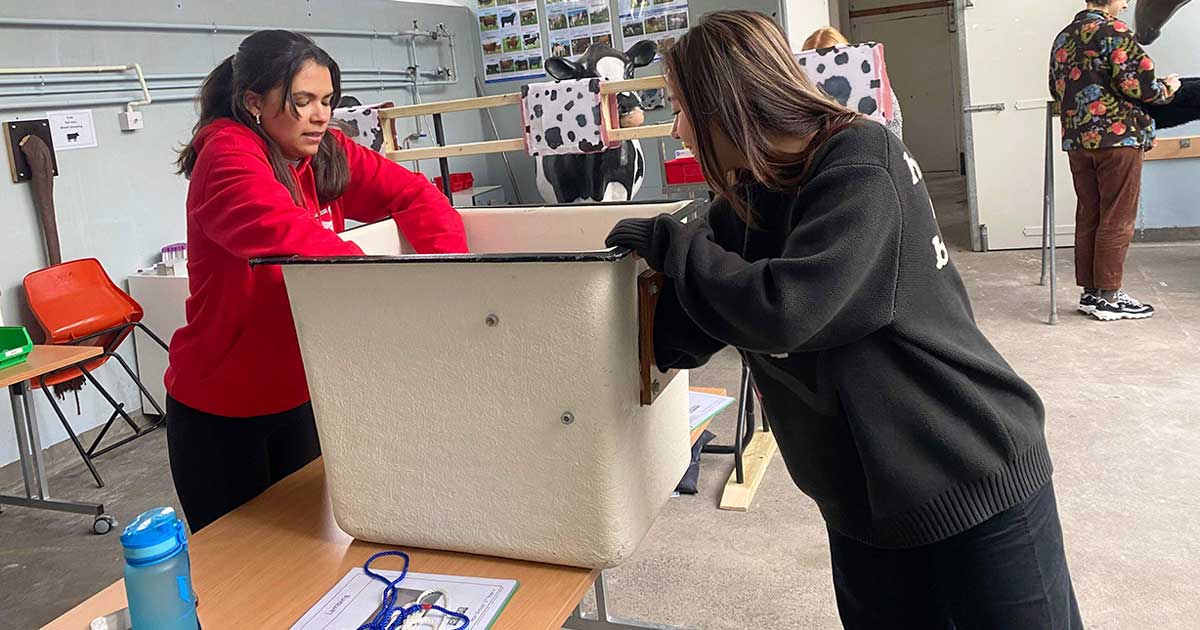The University of Bristol Veterinary School must be congratulated on hosting such a vibrant Association of Veterinary Students (AVS) Congress (3 to 5 March) at such short notice after The Royal (Dick) School of Veterinary Studies had to back down.
It was very impressive it managed to have a clinical and a non-clinical stream in the three disciplines of small (including exotics), farm and equine.

I think all the delegates will join me in thanking the organisers – particularly Charlotte Jones – for their hard work, not only in the preparation of such an interesting programme, but also on the smooth running of the lectures on the two days.
Lecture streams
Lectures and practicals of interest to everyone were held. Because we split into six groups, these had the advantage of being small.
The delegates made the most of their chances to ask questions. As one of the lecturers, I always enjoy the questions as it gives me an incentive to include the answers in subsequent talks. I often reflect on the questions I receive when I am trying to write articles or textbooks on my topic, “South American camelids”.
Careers fair
The delegates also had the chance to ask for information in the careers fair. This was very busy when I attended during the lunch hour on the Saturday. As I would have expected, BVA, BSAVA and SPVS were represented. I was surprised to see five veterinary corporates – CVS, IVC Evidensia, VetPartners, Linnaeus and Vets4Pets – with stands. I was impressed that VetNexa, an information company for veterinary surgeons and veterinary nurses, also had a stand.

I was sure the exhibitors felt their presence was well worthwhile with 90 attendees; the split was roughly half and half, with 50 pre-clinical and 40 clinical. I had an interesting discussion with a more mature student who had done a previous degree in psychology. She presented a strong argument for having completed a previous degree course.
I reflected how I had arrived at Bristol in the autumn of 1962, at just turned 18. In those days, because I had completed three A-levels in biology, chemistry and physics at school, I was said to have completed my first MB. This resulted in me qualifying four years later in the summer of 1966, barely 22 years of age.
Was I prepared to enter the profession? I definitely was arrogant enough to think I was. The professors of medicine and surgery might have had some considerable reluctance, but they must have thought that I was, as I was sworn in by the RCVS. I have never been disciplined in 56 years, so maybe they were right. I started doing CPD as soon as I qualified, so that certainly helped.
Delegates
I was interested in the wide backgrounds of the attendees. Naturally, the majority were from host University of Bristol – 61. I was pleased to see 10 from Harper and Keele Veterinary School and five each from the universities of Nottingham and Surrey.
Perhaps I was a little disappointed only two delegates came from each of the RVC and the University of Liverpool. The two delegates from The University of Edinburgh and one from the University of Glasgow did well to make such a long journey. Sadly, there was no representative from the University of Cambridge.
Perhaps a need for publicity exists
If any students read this article, I would strongly recommend attendance. The two days provided excellent CPD, both for clinical and pre-clinical students.

The whole congress had a wonderful buzz about it. It was also a great social event. The course dinner was extremely well attended. The food was top-rate and the wine was good. The enjoyable dancing rounded off the evening and was great fun. I was delighted that I was not stiff in the morning.
My lasting take-home message
Malcolm Morley, the president of the BVA, gave a very stimulating lecture to us all entitled, “Can workforce shortages be a catalyst for the changes our profession needs?”
Dr Morley chose a difficult question to address. He carefully set the scene by giving us an insight into the reasons for the shortage of veterinary surgeons. It would be easy to blame Brexit as, no doubt, the numbers of vets from the EU fell dramatically after the UK left. However, I am sure the numbers will rise again as signs of definite growth in salaries are on the horizon in the UK, which may not be mirrored on the other side of the channel.
I have many veterinary friends in Australia, New Zealand and South Africa. All three countries have shortages of veterinarians and no reason exists to suggest Brexit would really affect the numbers of vets in these countries. However, I know in these countries, like in the UK, a vast increase has occurred in the female to male ratio, which must be a big factor affecting the numbers of full-time veterinary practitioners.
I’m sure Dr Morley is correct that the profession needs to adapt. Ours is not the only profession that needs to embrace part-time working. Many veterinary employers, whether corporate or private, must accept that a 35-hour week should be the norm for full-time employment. In no way is 35 hours part time.
As a caring profession, we have to accept that we have to offer a 24/7 service, but those hours must be provided by others. It is totally unrealistic to expect a practitioner to be on duty overnight and then come into work and work a normal day as well.
Today’s students are tomorrow’s workforce

I welcome the new veterinary schools. I am sure they will provide excellent education, not only for practitioners, but also for veterinary scientists required in other disciplines.
Today’s students tick all the boxes, but we do not have enough of them. I am sure all the readers of Vet Times, like the BVA, are aware of the shortage of veterinary surgeons in the UK. It will be excellent if we can not only fill the job market, but also expand the veterinary services to accommodate a higher standard of veterinary care for all animals.
Welfare must remain at top of veterinary agenda
I enjoyed my six years as a trustee of the Animal Welfare Foundation (AWF). I certainly learned a large amount.
I would like to draw an excellent book that came to my attention at the last AWF forum: Through a Vet’s Eyes by Sean Wensley. It is a good read and very informative. I will be passing on my copy to my daughter, who is a veterinary practitioner. My son is an economist. I do my best to treat them equally. The book I will be passing on to him is Bad Data by Georgina Sturge. This is also a good read and very revealing about the figures we are all bombarded with these days.
In conclusion
However, I would like to conclude by returning to the AVS Congress. All the presentations I attended were well-illustrated and I saw no over-busy slides with too many figures, and no bad data.
The lecturers must be congratulated, as must the organisers who chose them.

Leave a Reply